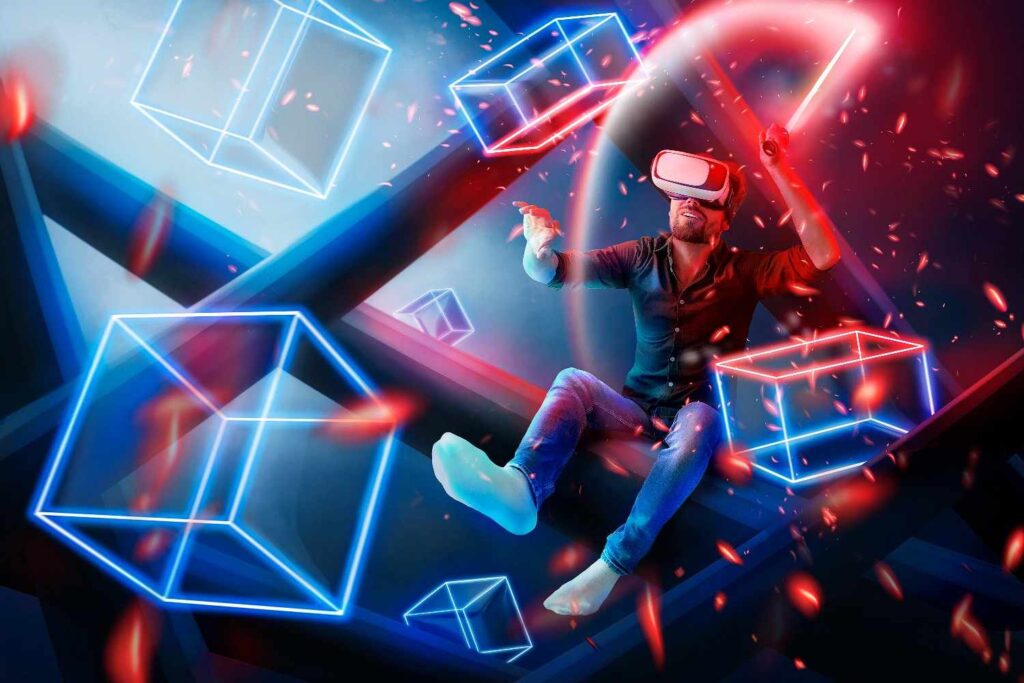OUTSOURCE CREATIVE SERVICES - OUTSOURCE CREATIVE WORKS-OUTSOURCING CREATIVE WORK - OUTSOURCE CREATIVE DESIGN -OUTSOURCE 2D ARTWORKS - 2D ART SERVICES - 2D ART OUTSOURCING -ART OUTSOURCING - OUTSOURCE ILLUSTRATION WORKS - OUTSOURCE ILLUSTRATION SERVICES - OUTSOURCE 3D MODELING - 3D MODEL OUTSOURCING- OUTSOURCING CAD WORKS- OUTSOURCE ARCHITECTURAL SERVICES -BIM - REVIT - 3D FLOOR PLAN - BIM OUTSOURCING SERVICES - MEP - REVIT MODELING - 3D FURNITURE MODELING - 3D ARCHITECTURE MODELING - AUGMENTED REALITY MODEL - VIRTUAL REALITY MODEL - 3D RENDERING - PRODUCT MODELING - 2D SERVICES - OUTSOURCE CREATIVE SERVICES -3D MODELING SERVICES - VFX
How Outsource 3D Modeling helps in the Gaming Industry ?
The modern gaming industry is a hyper-competitive arena where visual fidelity and asset volume are often the key differentiators between a hit title and a commercial disappointment. As games grow in scope and detail, the demand for high-quality 3D assets—from characters and environments to weapons and props—skyrockets. This exponential demand has made it virtually impossible for most internal development teams to handle the entire content pipeline themselves, leading to the rise of a powerful strategic solution: Outsourcing 3D Modeling.

Outsourcing 3D modeling is not merely a cost-cutting measure; it is a transformative force that allows game development studios of all sizes, from AAA giants to nimble indies, to overcome resource limitations, accelerate timelines, and inject specialized expertise into their projects. It's an indispensable component of the contemporary game development ecosystem, essential for meeting the relentless visual and technical standards of next-generation gaming.
The Core Imperative: Why Outsource 3D Assets?
The fundamental shift in game development—moving from smaller, contained projects to massive, open-world experiences requiring thousands of unique assets—has created a workflow bottleneck. Every rock, tree, car, and character model must be meticulously crafted, textured, and optimized. Outsourcing addresses this challenge head-on by offloading the heavy lifting of asset production to specialized third-party studios.
1. Cost Efficiency and Financial Agility
One of the most immediate and compelling advantages of outsourcing 3D modeling is the significant reduction in operational costs.
- Converting Fixed Costs to Variable Costs: Maintaining a large, in-house team of 3D artists involves substantial fixed expenses: salaries, benefits, office space, specialized high-end hardware (powerful workstations and rendering farms), and costly software licenses (for tools like Maya, 3ds Max, ZBrush, and Substance Painter). Outsourcing transforms these fixed, year-round overheads into variable, project-based costs. A studio only pays for the specific assets it needs, when it needs them.
- Access to Favorable Global Rates: Outsourcing unlocks the global talent market, allowing developers to collaborate with highly skilled artists in regions with lower labor costs. This geographical advantage enables studios to acquire world-class assets at a fraction of the cost of hiring local, top-tier talent in high-cost areas.
- Eliminating Recruitment and Training Overhead: The process of recruiting, vetting, hiring, and onboarding specialized 3D artists is time-consuming and expensive. Outsourcing eliminates this burden, as the partner studio maintains a fully trained, professional team ready to start immediately.
2. Access to Specialized and Diverse Expertise
A modern video game requires an astounding variety of 3D assets, each demanding a distinct set of skills. An in-house team may be generalists, but an outsourced studio can provide extreme specialization.
- Niche Skill Sets: Developers can immediately tap into expertise for niche areas without permanent hiring. This includes:
- Photorealistic Character Modeling: Artists specializing in high-poly sculpting, retopology, rigging, and complex shader work for lifelike characters.
- Environment Art: Experts in modular environment construction, realistic foliage creation, and massive open-world optimization.
- Hard-Surface Modeling: Specialists for intricate props, weapons, vehicles, and complex machinery.
- Specific Art Styles: Studios often specialize in unique aesthetics, from stylized, hand-painted models to highly realistic, PBR (Physically Based Rendering) assets, ensuring the art style is executed perfectly.
- Photorealistic Character Modeling: Artists specializing in high-poly sculpting, retopology, rigging, and complex shader work for lifelike characters.
- Quality and Cutting-Edge Technology: Reputable outsourcing partners are dedicated 3D production houses. They constantly invest in the latest software, sophisticated pipelines, and advanced hardware to maintain a competitive edge. This ensures clients benefit from the absolute best quality and newest techniques—like photogrammetry processing or real-time ray tracing optimization—without having to make the heavy capital investment themselves.
Strategic Advantages in the Development Pipeline

Beyond cost savings and talent acquisition, outsourcing offers critical strategic benefits that directly impact a game's time-to-market and overall quality.
3. Accelerated Production and Faster Time-to-Market
In the high-stakes gaming industry, a delayed launch can be catastrophic. Outsourcing is the key to maintaining aggressive development schedules.
- Parallel Development: The most crucial time-saving benefit is the ability to enable parallel development. While the in-house team focuses on core mechanics, code, narrative, and level design, the outsourced team can simultaneously focus on asset production. This parallel workflow drastically shortens the overall production cycle.
- Scalability on Demand: Game production often has periods of intense asset demand, followed by lulls. An in-house team cannot scale rapidly enough to meet a sudden surge in need, leading to bottlenecks. Outsourcing offers unmatched flexibility and scalability, allowing a studio to instantly ramp up production capacity—adding dozens of artists for a major sprint—and then scale back down just as quickly, optimizing resource allocation throughout the project lifecycle.
- 24/7 "Follow-the-Sun" Workflow: With globally distributed outsourcing partners, development teams can leverage time zone differences to achieve a near-24/7 production cycle. As the in-house team finishes their day, the outsourced team on the other side of the world takes over, ensuring the project is always advancing.
4. Focusing on Core Competencies and Innovation
A development studio's core strengths typically lie in game design, coding, storytelling, and overall vision. Distracting lead staff with the managerial and technical burden of mass asset production dilutes their focus.
- Internal Team Focus: By outsourcing 3D modeling, the internal team is freed to focus on core processes—the unique elements that define the game, such as core gameplay mechanics, AI, engine optimization, and narrative design. This strategic focus ensures the central pillars of the game are polished to perfection, leading to a stronger, more innovative, and more engaging player experience.
- Creative Oversight, Not Production: Lead artists and art directors can shift their role from production managers to pure creative overseers. They spend less time managing the minutiae of asset creation and more time providing high-level feedback, maintaining artistic consistency, and pushing the overall creative vision.
Mitigating Risk and Ensuring Quality
The success of a massive game relies on consistency, technical stability, and high-quality assets. Outsourcing helps mitigate risks associated with these factors.
5. Risk Mitigation and Quality Control
- Consistency and Technical Standards: Professional 3D modeling studios are experts in adherence to technical specifications and art direction guidelines. They have established quality assurance (QA) pipelines to ensure every asset is optimized for the target game engine (Unity, Unreal, etc.), uses correct polygon counts, adheres to texture resolutions, and has clean, animation-ready topology. This reduces the risk of low-quality, unoptimized assets causing performance issues, a major threat to game stability and player reception.
- Reduced Employee Turnover Impact: High turnover in a specialized in-house team can cripple a project. Outsourcing mitigates this risk by ensuring the client works with a stable, large studio resource pool. If one artist leaves the outsourcing studio, the project continuity is maintained by another trained specialist, shielding the client from internal resource fluctuations.
Conclusion: The Strategic Necessity of Outsourcing 3D Modeling
Outsourcing 3D modeling is no longer an optional tactic but a strategic necessity for any studio aiming to compete in the current gaming landscape. It is the engine of scale that drives modern game development, allowing creative teams to dream bigger without being crushed by the production demands.
By providing cost efficiency, specialized talent on demand, accelerated production timelines, and the ability for internal teams to focus on core innovation, outsourcing empowers game developers to consistently deliver the visually stunning, expansive, and high-performing experiences that today's players demand. It is the invisible backbone that supports the blockbuster titles and innovative indie games alike, ensuring that the only limit to a game's scope is the developer's imagination.
Visit
Fore more details contact us : https://www.outsource3dmodeling.com/

No comments:
Post a Comment